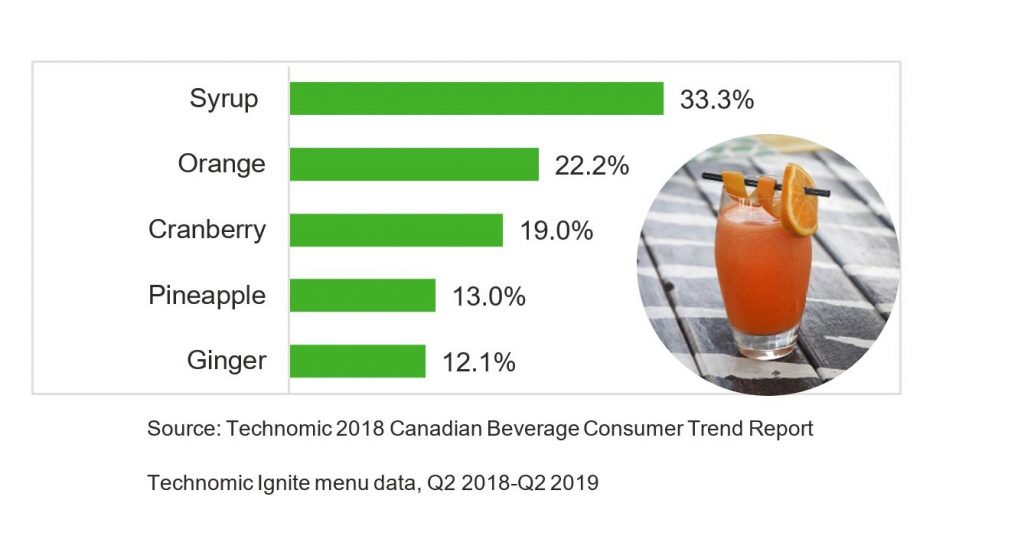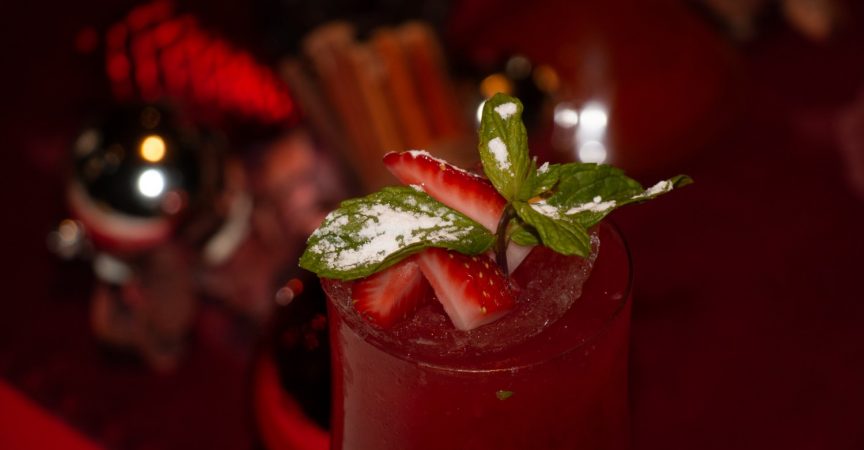Fastest-Growing Ingredients in Mocktails
Here we look at the fastest-growing ingredients in mocktails on Canadian menus over the latest year-over-year period.
Syrups are on the rise, up 33.3%. Concepts are highlighting a wide range of syrup flavours. For example, CinCin in Vancouver, British Columbia, features basil syrup in its Delizia mocktail, and Hudsons Canada’s Pub recently launched its Canadian Rhubarb mocktail, made with housemade rhubarb syrup. Cinnamon, agave, kiwi and brown sugar syrups are trending in mocktails, as well.
Diverse fruits are also growing, with orange, cranberry and pineapple increasing by 22.2%, 19.0% and 13.0%, respectively. With over a quarter of consumers (27%) reporting that fresh-squeezed or -pressed juice claims will make them more likely to purchase a beverage at restaurants, operators are spotlighting fresh-squeezed or -pressed orange, cranberry and pineapple juices in their mocktails, lending a premium appeal. In addition to fresh-squeezed or -pressed preparation styles, restaurants are innovating their drinks by adding orange peel, varied cranberry flavours, such as white cranberry or cranberry basil and pineapple-coconut pairings.
Ginger is also increasing (+12.1%), with operators commonly incorporating the root as ginger beer in mocktails. Stronger and spicier than ginger ale, ginger beer is typically an integral ingredient in the alcohol beverage Moscow mule. Since a third of consumers, including 41% of younger consumers ages 18-34, agree that they would be likely to purchase mocktails that taste like they contain alcohol, restaurants are both spotlighting ginger beer in mocktails and naming the drinks similar to their alcohol counterpart for extra edge. For instance, One Restaurant in Toronto menus the A Mule Named Manny mocktail, featuring ginger beer.










